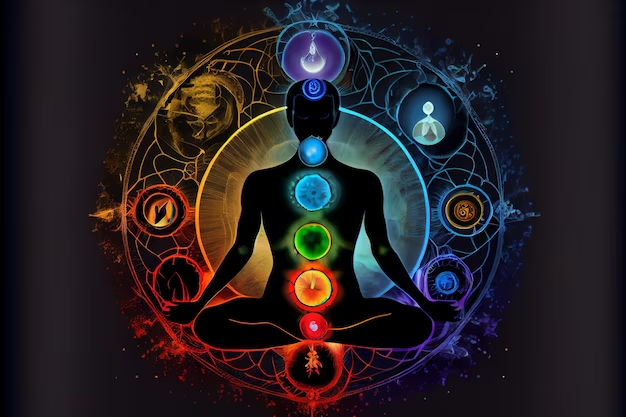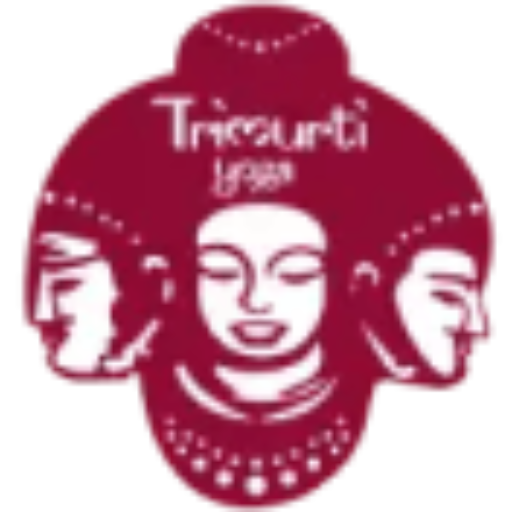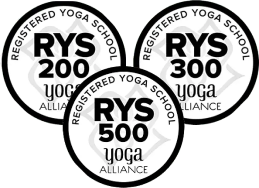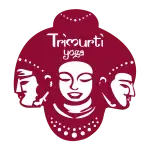
The seven chakras are known to be the body’s primary energy points, starting from the root chakra located at the spine to the crown chakra above the head. Chakra which is a Sanskrit word that means a disc or wheel, refers to energy centers in the body. The chakra system, which originated in India between 1500 and 500 BC, can be thought of as our body’s invisible energy system. All seven chakras have different meanings. In this article, we are going to discuss everything related to chakras.
What is a Chakra?
Chakra is a Sanskrit word that translates as “wheel” or “circle” in English, and it comes from the ancient Indian yoga tradition. In yoga, chakras represent our bodies’ energy centers.
Chakras are important components of your spiritual path, and understanding them will allow you to better link and connect your mind, body, and spirit.
How Do the Chakras Work?
Chakras are energy channels that our complex and present in our bodies and are thought to carry life power. You could refer to it as the body’s spiritual nervous system. These spinning energy circles have the potential to influence both our physical and emotional well-being.
These chakras are present in our body starting with the root chakra at the base of your spine and ending with the crown chakra just above the head.
When they gained popularity in the West, people assigned a specific color to each chakra. Some yoga practices link certain yoga postures or motions to each chakra.
The Seven Root Chakras
The seven chakras each have their special meaning. Each chakra represents a specific organ and has a distinct meaning.
Root Chakra
The root chakra, that is also known as Muladhara in Sanskrit, is the first chakra located at the base of the spine. It is related to the color red and the element earth. It controls family, abundance, and security. The root chakra represents everything that keeps us grounded, including our survival instincts and basic needs.
It is linked to the spine, kidneys, bladder, and large intestine. Bowel diseases, depression, immune system issues, addictions, and allergies are all common symptoms of being out of balance. When this chakra is out of balance, emotions such as insecurity, scarcity, worry, and fear of change may arise.
Sacral Chakra
The Sacral Chakra or the Svadhisthana chakra, located below the navel, indicates the orange color and represents the element water. The sacral chakra is thought to regulate sexuality, creativity, intuition, self-esteem, compassion, and adaptability. When the sacral chakra is unstable, it is said to create feelings of anger, a lack of creativity, and obsessive thoughts about sex.
It connects our sexual organs and is situated between our belly button and pubic bone. When someone is out of balance, they may have menstruation problems, testicular and uterine disorders, weakness, and spinal pain. What about the emotional experience of this chakra when unbalanced? You could face jealousy, increased sensitivity, and poor communication.
Solar Plexus Chakra
The Sanskrit term for the solar plexus chakra, Manipura, means “city of jewels,” and it is thought to be located between the ribcage and the navel. Its color is yellow, and it represents the fire element.
The solar plexus chakra is thought to be the origin of self-worth and emotions such as ego, rage, and aggression. It is supposed to present itself physically as digestive issues, liver issues, or diabetes. In terms of emotions, it is believed that if the solar plexus chakra is imbalanced it will lead to depression and low self-esteem. And when it is balanced, it can be a source of energy, productivity, and confidence.
Heart Chakra
The heart chakra, or fourth chakra, is located in the chest. It regulates love and empathy, influencing our romantic relationships and general feelings of love for others. This chakra has a close connection to our heart, circulation, and vagus nerve activity.
Unbalanced individuals are more likely to experience nervous breakdowns, heart and circulation problems, breast cancer, and scoliosis. When this chakra is damaged, it might cause tears, worry, despair, and difficulties in offering and receiving love.
Throat Chakra
The throat chakra is our fifth chakra, and it controls our ability to remain self-aware and speak the truth. Vishuddha, or the throat chakra, is supposed to influence the neck, mouth, tongue, and other parts of the throat region. The throat chakra is blue in color and represents the element ether. The throat chakra represents self-expression, communication, and confidence. Balancing the throat chakra is believed to control hormonal flow as well as promote the positive presentation of inner thoughts.
Third Eye Chakra
The third eye, or Ajna chakra, which is our sixth chakra is located between the eyebrows. The third eye has no elemental connection but is represented by the color indigo. The third eye chakra, which is often used as a focal point in asana practice, is thought to control your intellect, intuition, knowledge, and spiritual strength. It is believed that having a balanced third eye chakra allows you to see the connections in this world and beyond.
An inactive third eye chakra is supposed to cause headaches, migraines, or blurred vision. When balanced, the third eye is thought to free you from worldly attachments.
Crown Chakra
The crown chakra, Sahasrara, is located at the top of the head and is the highest of the seven primary chakras. The crown chakra’s color is violet or white. This is also known as the “thousand petal lotus” chakra and is thought to be the most spiritual of the major chakras.
Opening the crown chakra is said to connect a person to their higher self since it is associated with spirituality, enlightenment, and creative thinking. It is connected to consciousness and the universe. When the crown chakra is out of balance, it is said to cause depression, isolation from the outside world, frustration, and negative emotions.
Conclusion
All seven chakras are considered the primary sources of energy. Each one of them has a distinct purpose and meaning. They are located in different parts of our body starting from the root chakra that is located along the spine, from the base to the crown of your head.
We Also Provide These Courses:








